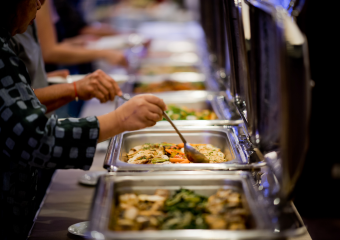Ordering Food Online? Lawyer Sheds Light On Legal Consumer Rights – Slurrp
Garima Johar

Updated:Jun 10, 2024
The cases of low-quality food being received from online delivery platforms are very common. But who is really at fault? The restaurant that prepared the food or the delivery platform? Why don’t you read what a lawyer suggests you to do in either of the cases?

[embedded content]
So, what should you do when you receive food that is not up to the mark? To get you the answer to the question of the hour, Slurrp did an exclusive interview with a lawyer, Hiral Nagori Sonigara. Holding an LLM in International Business Law, read on what Hiral Nagori Sonigara’s legal advice about exercising your rights.
Know Your Consumer Rights
Which consumer rights are protected by law when ordering food online in India?
Quite a few key consumer rights are safeguarded by law when ordering food online in India, primarily under the Consumer Protection Act 2019 and guidelines from the Food Safety and Standards Authority of India (FSSAI).

- Firstly, consumers have the Right to Safety, ensuring they receive food that is safe for consumption. Online food platforms must adhere to FSSAI standards and maintain stringent hygiene practices during food preparation, packaging, and delivery.
- Secondly, the Right to Information ensures that consumers have the correct details about the food, such as ingredients, allergens, nutritional information, and expiry dates. Transparency regarding restaurant details, menu items, and pricing is equally important.
- The Right to Choose allows customers to select from a variety of food options. They also have the right to cancel orders and receive refunds according to the platform’s policy, especially if there are delays or if the delivery is unsatisfactory.
- The Right to be Heard ensures that consumer grievances are addressed promptly, with online platforms required to have robust complaint and dispute resolution mechanisms.
- Under the Right to Redressal, consumers can seek compensation if they suffer harm due to unsafe or substandard food. They can also demand replacements or refunds if the delivered food is stale, of poor quality, or not as described.
- The Right to Consumer Education emphasises informing consumers about their rights and redressal procedures through awareness programs by consumer organisations and the government.
- Last but not least, the Right to Fair Trade Practices protects consumers against unfair practices like misleading advertisements, false claims, and hidden charges by online food delivery platforms.
How do these rights differ in the case of restaurants and delivery platforms?

Who should consumers hold responsible for bad-quality food? The delivery platforms or restaurants?
[embedded content]
How To File For Refunds
What is the legal framework for claiming refunds or compensation in such cases?
Consumers can file a complaint with the Consumer Disputes Redressal Commission at the district, state, or national level, depending on the claim amount. The process begins with filing a written complaint, either in person or online, detailing the issue and providing evidence such as receipts, photographs, and communication records with the restaurant or delivery platform. Moreover, consumers can report violations to the FSSAI, which can lead to inspections, fines, and even shutdowns of non-compliant establishments. Delivery platforms usually have their helplines offering refunds for unsatisfactory experiences. Consumers should first go through these channels before seeking legal remedies.

The next best thing that consumers should do is:
1. Maintain all relevant documentation and evidence.
2. Report the issue promptly to both the restaurant’s owner or manager and the delivery platform.
3. Use official channels like the National Consumer Helpline (NCH) for advice and assistance.
What are the typical timelines consumers can expect for processing refunds and resolving disputes?
The Role Of Social Media
There are a lot of consumer complaints on social media platforms like X and LinkedIn against delivery services, but not as much against restaurants. Why do you think this is the case?
Delivery platforms have more visibility, and consumers interact with them directly. They serve as the immediate point of contact, and their branding stands out during ordering and delivery. As a result, customers naturally reach out to these platforms first when issues arise.
What advice do you have for consumers to ensure their complaints are addressed effectively?







